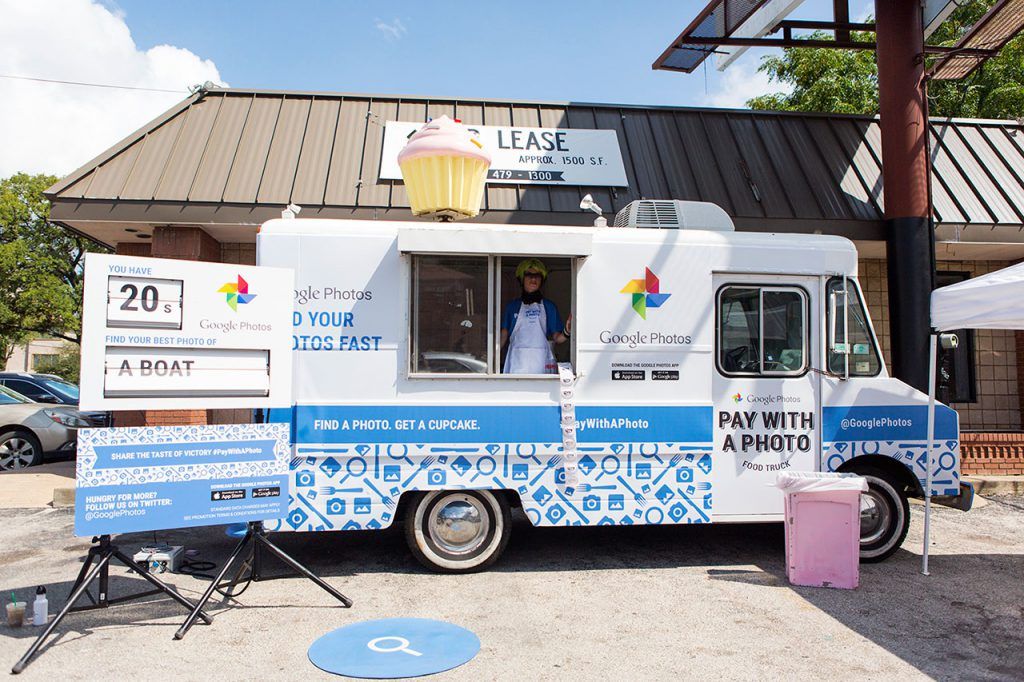Learn how creating a tangible, offline experience with experiential marketing can help you better communicate your brand identity.
What is experiential marketing, and more importantly, how can you use experiential marketing to reinforce your brand presence?
As ethereal as it may sound, experiential marketing is more than just the latest empty marketing buzzword, so relax! In fact, the underlying concept has been around for years. It’s the natural evolution of defining your “why” as a brand and unveiling it to the world through thoughtful interactions.
On the surface, it’s beautifully simple. But if a brand hasn’t been properly defined, communicating with even a hint of authenticity is impossible.
Experiential Marketing Explained
As the name suggests – experiential marketing is literally “experience” marketing (brilliant, I know. But stick with me).
Instead of broadcasting a disruptive message to the world and hoping for engagement, you are physically interacting with potential customers on a human level, in real time, in a tangible way. You’re immersing them in your brand identity.
In other words, experiential marketing is tactile messaging that audiences can physically touch, hear, see and feel.
Promote Your Brand, Not Your Products
You may be thinking that this all sounds like little more than a sampling table at a supermarket. You’re not far off, but there’s one key difference: experiential marketing focuses on your brand values, not your products.
Experiential marketing focuses on your brand values, not your products.
More times than not, a product itself isn’t even used in marketing. Rather than offer free samples (which, admittedly, does sometimes work), companies are using their brand story itself as the experience. Needless to say, it’s a cool thing to see brands embracing transparency – but it’s the resulting growth that has us really excited.
Experiential’s uniquely comprehensive approach works by using a tangible, offline experience to drive a loud online dialogue.
Related Reading:
Utilizing Emerging Media Channels – Twitch Advertising
Real Life Examples: Driving Online Traction Through Offline Tactics
Lean Cuisine: #WeighThis Campaign
In New York City, Lean Cuisine hosted an experiential campaign complete with a weight-loss message that defied the all-common “change-yourself-if-you-want-to-be-happy” messaging. Instead, Lean Cuisine occupied Grand Central Station where they asked women to “weigh in” on how they’d prefer to be measured.
This approach allowed women to dictate how they were valued – like the fact that one participant was 55 and back at college. Another cared for 200 homeless children every day.
The #WeighThis campaign created a fierce sense of pride among the participating women and inspired a powerful online conversation in its wake. By the end of it all, Lean Cuisine successfully established that it cares about women and weight insecurities – not just the bottom line.
And get this – a physical product never came into play, yet still they were able to create an interactive experience that said, “Okay, we make a product that fits into a healthy lifestyle, but your accomplishments matter more than the number on the scale. It’s all about you.”
The end result for Lean Cuisine? Over 204 million impressions on the #WeighThis campaign.
Google & Zappos: Cupcake Ambush
The Google and Zappos campaign had all the right ingredients (terrible pun intended).
With a cupcake truck and a new photo app to promote, Google took to the streets of Austin, Texas. To get a free cupcake, participants were asked to merely take a photo with the app (incentivizing app downloads).
 Cleverly, Zappos set up shop across the street, giving away watches, shoes, gift cards, and the like. The catch? People had to #paywithacupcake. Zappos concluded their video of the encounter with one cheeky line: “Thanks for the cupcakes, giant tech company.” Home run.
Cleverly, Zappos set up shop across the street, giving away watches, shoes, gift cards, and the like. The catch? People had to #paywithacupcake. Zappos concluded their video of the encounter with one cheeky line: “Thanks for the cupcakes, giant tech company.” Home run.
The Cupcake Ambush is a great example of not only experiential marketing, but also affiliate marketing. Choosing the right company to do a bit of co-branding with can help you both make a bigger splash.
CASE STUDY:
Discover How We Captured Luxury Island Living, Before This Resort Paradise Even Opened
Experiential Marketing: Advantages for Your Brand
According to statistics published in the Event Track 2016 report, 49% of people attending branded events shoot and share mobile videos of their experience. Roughly 40% of these are published on social media with a corresponding hashtag and brand mention. Yes, you read that right. It’s a massive opportunity for growth.
The long and short of it is this: The people who experience your brand do your marketing for you.
So, if you make sure those people experience your brand in a way that’s in line with your True North, you have the opportunity to skip the first three stages of the marketing funnel (the awareness, consideration and decision stage) and proceed straight to the “promoter” stage. These evangelists are among your most valuable assets – a loyal consumer, who digs your brand, and is willing to share your story.
RELATED READING:
Measure Customer Loyalty With 4 Tasty Google Analytics Reports
Experiential Marketing Best Practices
- Know yourself. You have to go through the process of defining your True North before you can communicate your brand purpose to anyone else.
- Don’t shove it in their face. Intrigue your market and let them come to you.
- Keep your experience efforts true to your brand purpose. They should speak directly to your audience, in their own language.
- Remember that even if you’re a B2B company, you are ultimately still speaking to real people.
- Be prepared – this is a great opportunity to create video content that will extend the reach and shelf life of your experience.
- Define your hashtag, and do your homework. This is your opportunity to extend the brand experience via social media.
- Go local – there is nothing wrong with running localized campaigns – the story can still spread far and wide.
- Don’t be afraid to team up with an affiliate. Complementary brands can do a lot for each other.
- Get people talking about you. It’s not always safe to play it safe. Sometimes you have to leave your comfort zone.
- Have fun. Energy is contagious.
In order to build a loyal audience, people need to experience your brand.
They want to feel it, taste it, smell it, and make it a part of their own story.
Experiential marketing is a way of communicating your brand identity to your audience in a tangible and effective way.
Have you truly defined your brand? Check out our Brand Awareness Survey. If it gives you trouble, it’s probably time to invest in your brand.




Join the Discussion